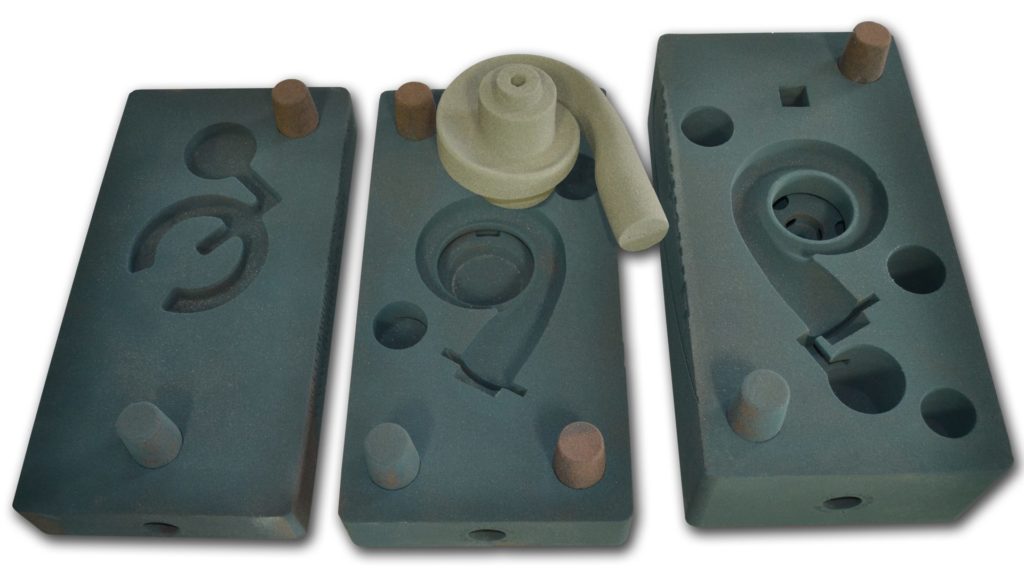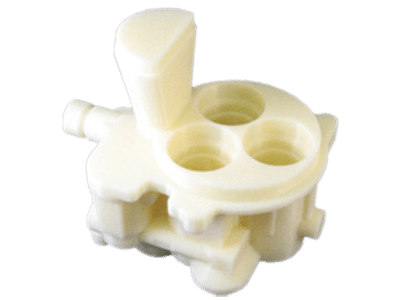Overview
3D printing for sand casting applications can result in durable and accurate patterns. Utilizing both Polyjet and FDM technology, this method allows for substantial savings on cost, labour, & time, streamlining and accelerating your product development process.


Advantage
Producing sand molds and cast metal parts is a relatively easy process, unfortunately, fabricating patterns is often difficult, time-consuming and expensive. With traditional CNC machines, the biggest problem is high costs and lengthy lead times. With 3D printing technology such as Polyjet and FDM, manufacturers can save time, labour, and cost with an efficient product development line without needing to outsource or use traditional machining methods.
Case Study: Sand Casting with Melron Corporation
FDM
Thermoplastics made from FDM 3D printing technology carry the high compressive strength required for green sand casting patterns. As the surface finish can be optimized through secondary processes such as sanding, an FDM part’s surface can be sealed which keeps the release agent from penetrating and sand from sticking. FDM technology gives the ability to build highly accurate, large, and complex patterns quickly and cost-effectively. In the case study above, FDM tooling matchplates were 60% cheaper and took anywhere from 37% to 62% less time compared to traditional CNC machine tooling matchplates.
Polyjet
Polyjet 3D printing with FullCure materials carries great mechanical properties. Sand casting models printed with Polyjet boasts high resolution, a smooth surface right off the printer and exceptionally fine details. This is due to the lacquer that significantly hardens the pattern surface without affecting the finish.